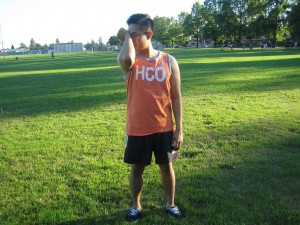Hay fever is a type of allergy caused by outdoor or indoor allergens such as mold, dust, pet dander and pollen. These allergens cause symptoms the same as cold such as itchy eyes, runny nose, sinus pressure and nasal congestion.
Symptoms of hay fever
- Sneezing
- Runny nose with clear and thin discharge
- Postnasal drip
- Congested or stuffy nose
- A sensation of a plugged ears
Runny nose with clear and thin discharge. - Watery or bloodshot eyes
- Itchiness of the nose, soft palate, ear canal, eyes and the skin
- Fatigue
- Difficulty in sleeping
Causes
- House dust which contains plenty of organic and inorganic compounds such as mites, hair, dirt, smoke, fibers, mold spores, insects, pollen grains, animal dander and mites.
- Household pets such as dogs and cats are sources of domestic allergens found in the furs of animals and household dust. They remain airborne for long periods of time. Other animals that can also cause allergies such as rabbits, horses and guinea pigs.
- Pollens produced by trees, grasses, flowers and other plants in fertilization.
- Fungal allergens such as molds from spores
- Occupational irritants such as fumes, dust, vapours, gases and other types of chlorine or wood dust.
Treatment
- Gargle with warm salt water. In a glass with warm water, mix 1-2 tablespoon of table salt, mix until salt it fully dissolves and gargle the solution to relieve sore throat.
- Take over-the-counter antihistamine such as diphenhydramine to lessen the symptoms of runny nose, sneezing, itchy throat and eyes.
- Use steroid nasal spray such as beclomethasone, triamcinolone and fluticasone to lessen the symptoms of hay fever and should be used every day.
- Use the prescribed over-the-counter anti-inflammatory medication to relieve symptoms of hay fever.
- Rinse the sinuses using a saline flush. Spray each nostril with the saline solution. Make a saline solutioon by mixing 3 tablespoons of iodine free salt and a teaspoon of baking soda. Add a teaspoon of this mixture to 1 cup lukewarm distilled or bottled water. Place the solution in the irrigation device and flush the solution inside each nostril. Avoid using tap water for the saline flush. Wash the irrigation device after use and leave to dry in air to prevent growth of bacteria.
Tips
- Stay inside an air-conditioned room and minimize staying outdoors during the hay fever season
- Take an allergy shot to lessen the severity of the symptoms.
- Apply petroleum jelly inside the nose especially when outdoors to trap pollen and prevent it from spreading into the inner lining of the nose.
- Wear sunglasses and frequently splash water the eyes to protect the eyes from getting irritated by pollen.
FACT CHECK
https://acaai.org/allergies/types/hay-fever-rhinitis
https://www.medicinenet.com/hay_fever/article.htm
https://www.mayoclinic.org/diseases-conditions/hay-fever/symptoms-causes/syc-20373039


